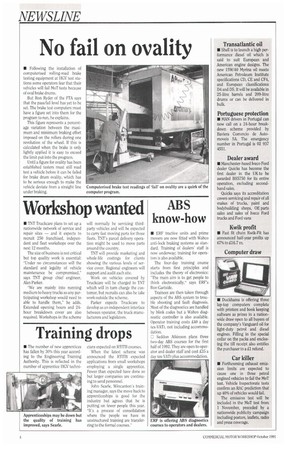No fail on ovality
Page 92

If you've noticed an error in this article please click here to report it so we can fix it.
IN Following the installation of computerised rolling-road brake testing equipment at HGV test stations some operators fear that their vehicles will fail MoT tests because of oval brake drums.
But Ron Ryder of the FTA says that the pass/fail level has yet to be set. The brake test computers must have a figure set into them for the program to run, he explains.
This figure represents a percentage variation between the maximum and minimum braking effort imposed on the rollers during one revolution of the wheel. If this is calculated when the brake is only lightly applied it is easy to exceed the limit put into the program.
Until a figure for ovality has been established testers must still road test a vehicle before it can be failed for brake drum ovality, which has to be serious enough to make the vehicle deviate from a straight line under braking.
















































































































